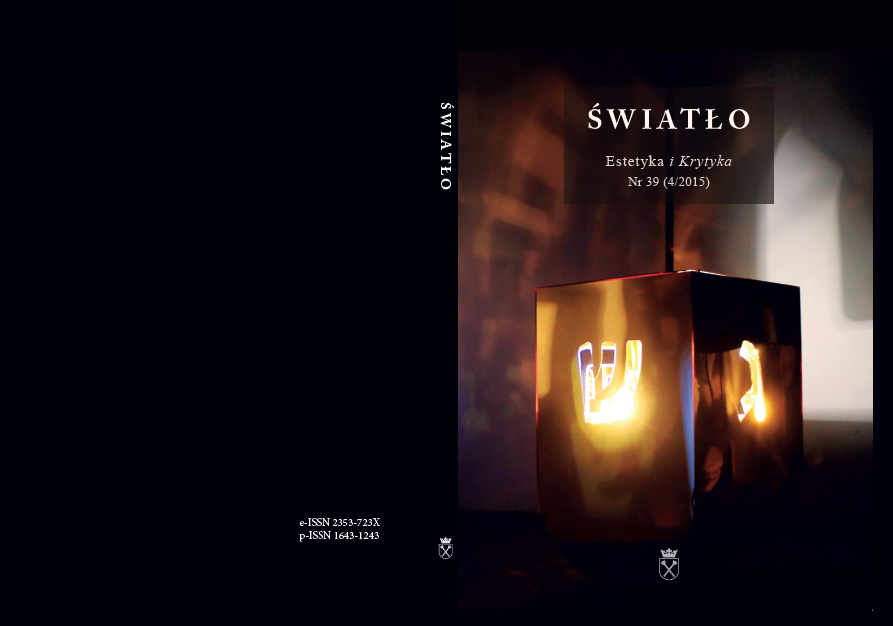Associations of the Hegelian Philosophy of Art with the Tradition of the Metaphysics of Light
Associations of the Hegelian Philosophy of Art with the Tradition of the Metaphysics of Light
Author(s): Paulina TenderaSubject(s): Philosophy, Fine Arts / Performing Arts, History of Philosophy, Aesthetics
Published by: Wydawnictwo Uniwersytetu Jagiellońskiego
Keywords: light;Hegel;aesthetics;romantic art;painting
Summary/Abstract: In this article I would like to present three main areas ofmy interest in the aesthetics of Georg F. W. Hegel which are associated, directly or indirectly, with the philosophical tradition of the metaphysics of light. First, I will introduce my interpretation of the con-cept, used by Hegel, of luminosity in art (here I present my own understanding of this phenomenon, as I refer it to all of the three types of art we can speak of within the framework of Lectures on Aesthetics;1meanwhile, the traditional approach has been to apply this concept exclusively to romantic art, which, while correct, is only justifiedby the examination of art as a whole). Thus I propose here to examine the phenomenon of the luminosity of truth in symbolic, classical and romantic art. Next, I will present an understanding of the aesthetic experience of romantic works of art, an understanding which emerges from the concept of a work as a physical object of luminous truth and is fixed in the Platonic claritas theory of light, closely associated with the metaphysics of light.I will illustratemy reflections with several examples of romantic painting. Then,I will move on to the search for the meaning of the development of art. I see this mean-ing in the realisation of the principle of the luminosity of truth in art, and, in turn, this realisation in a specific element of representation in painting, namely that of the human eye, which Hegel defined as ‘the light of the eye’. This theme takes us back to the tradi-tion of Platonic philosophy, in both its ancient and its mediaeval Christian forms,and acknowledges a close relationship with the aesthetics of Hegel and the European tradi-tion of the metaphysics of light.It is worth establishing, before proceeding to Hegel’s aesthetics per se, the sense in which we understand the metaphysics of light here. Above all, the metaphysics of light is a narrower concept than the philosophy of light, because in actuality it is exclusively a metaphysical ontology. Light (usually claritas, sometimes lux) is understood here as divine light or light derived from first principles, e.g. from Plotinus’s concept of the One, and partakes of an intellectual rather than a sensual character; thus it actually has little in common, for example, with physical light. Consequently, observations on light in extra-ontological terms, such as goodness, (axiological) grace, knowledge, or (epistemologi-cal) enlightenment, are here secondary for us, since they concern not light itself, but the consequences of its existence (e.g. grace is a consequence of the existence of claritas).The primary issue is, however, to assume that claritas substantially derives from God, the Absolute, the Hegelian absolute spirit; its existence depends, therefore, on co-participation (methexis), and not on its conformity with or resemblance (mimesis) tothe first cause, e.g. within the meaning of St. Thomas Aquinas.
Journal: Estetyka i Krytyka
- Issue Year: 39/2015
- Issue No: 4
- Page Range: 85-104
- Page Count: 20
- Language: English

